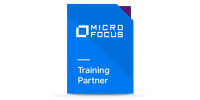Administratorem danych osobowych jest Compendium – Centrum Edukacyjne Spółka z o.o. z siedzibą w Krakowie, ul. Tatarska 5,30-103 Kraków, e-mail: compendium@compendium.pl
W sprawach związanych z Pani/a danymi można kontaktować się z powołanym Inspektorem Ochrony Danych, e-mail iod@compendium.pl, lub pisząc na adres korespondencyjny Compendium – Centrum Edukacyjne Spółka z o.o. ul. Tatarska 5, 30-103 Kraków
Dane będą przetwarzane w celu przesyłania informacji handlowych, marketingowych oraz przesłaniu newslettera na podstawie wyrażonej zgody.
Dane mogą być udostępniane:
- pracownikom i współpracownikom Compendium – Centrum Edukacyjne Spółka z o.o., którzy muszą mieć dostęp do danych osobowych aby realizować Pani/a zamówienie, lub usługę
- podmioty przetwarzające dane na zlecenie Compendium – Centrum Edukacyjne Spółka z o.o., np. poczta, kurier, przewoźnik profesjonalny,
- uprawnione organy państwowe w tym organy nadzorcze w zakresie ich uprawnień.
Dane będą przechowywane przez okres realizacji zamówienia i usług posprzedażowych, a jeżeli tego okresu ustalić się nie da – do czasu wyrażenia przez Panią/a sprzeciwu.
Ma Pan/i prawo dostępu do swoich danych osobowych, ich sprostowania, usunięcia lub ograniczenia przetwarzania.
Ma Pan/i prawo do wniesienia sprzeciwu wobec dalszego przetwarzania, a w przypadku wyrażenia zgody na przetwarzanie danych do jej wycofania. Skorzystanie prawa cofnięcia zgody nie ma wpływu na przetwarzanie, które miało miejsce do momentu wycofania zgody.
Ma Pan/i także prawo do przenoszenia danych.
Informujemy, że Pana/Pani dane osobowe nie będą profilowane.
Przysługuje Pani/u prawo wniesienia skargi do organu nadzorczego Prezesa Urzędu Ochrony Danych Osobowych, w przypadku przetwarzania Pana/Pani danych osobowych w sposób naruszający przepisy RODO.

